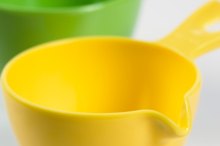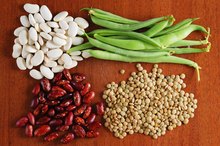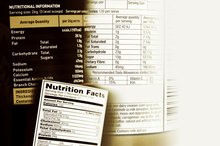How to Calculate Grams
There are several substances in food you may want to keep track of. For example, you might want to calculate your intake of fat, carbohydrates, fiber, or protein. All of these are measured in grams. Sometimes prepackaged foods list the grams of fat and other items on the label so you don’t have to calculate them. However, when that’s not the case or when you cook, you’ll need to calculate grams of substances in food. Regardless of which food component you are tracking, the calculations are carried out in the same way.
Find the amount of the food component in the product’s nutritional information. You can use a percentage if the content is not listed in grams. If the product label does not provide you with the information you need, look it up on a nutrition reference chart. You can find online charts that list the content of fat, protein, and other substances for many foods. Many calorie charts also list fat and carbohydrate content.
How to Calculate Kcal
Learn More
Convert percentage content to weight measure by multiplying the serving size by the listed percentage. For example, if a 150 g serving of a food contains 10 percent carbohydrates, this means the serving has 15 g of carbohydrates.
Convert ounce measure to grams if necessary 1. There are about 31.1 g in 1 oz., so multiply the number of ounces of the substance by 31.1 to convert to grams. Suppose one serving contains 0.3 oz. of fat. Multiply 31.1 x 0.3. This gives you 9.33 g of fat per serving.
How to Calculate Fat, Protein & Carbohydrates
Learn More
Divide the amount you actually eat by the listed serving size and then multiply by the number of grams per serving to find the number of grams of the substance you actually consumed.
Keep a list of the foods you eat during the day and the amounts in grams of the substance you are tracking. At the end of the day, add up the amounts to find the total grams consumed for the day.
Related Articles
References
Resources
Writer Bio
Based in Atlanta, Georgia, W D Adkins has been writing professionally since 2008. He writes about business, personal finance and careers. Adkins holds master's degrees in history and sociology from Georgia State University. He became a member of the Society of Professional Journalists in 2009.







